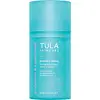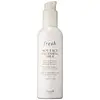What's inside
What's inside
 Key Ingredients
Key Ingredients

 Benefits
Benefits

 Concerns
Concerns

 Ingredients Side-by-side
Ingredients Side-by-side

Water
Skin ConditioningSqualane
EmollientCaprylic/Capric Triglyceride
MaskingGlycerin
HumectantLactococcus Ferment Lysate
Skin ConditioningIsoamyl Laurate
EmollientCetearyl Olivate
Butyrospermum Parkii Butter
Skin ConditioningPseudozyma Epicola/Argania Spinosa Kernel Oil/Olive Fruit Oil/Sunflower Seed Oil/(Angelica Gigas/Licorice/Lithospermum Erythrorhizon) Root Ferment Extract Filtrate
EmollientSorbitan Olivate
EmulsifyingLycium Barbarum Fruit Extract
AstringentCopper Palmitoyl Heptapeptide-14
Skin ConditioningHeptapeptide-15 Palmitate
Skin ConditioningHoney
HumectantPhospholipids
Skin ConditioningBetaine
HumectantNiacinamide
SmoothingSodium Phytate
Sorbitol
HumectantGluconolactone
Skin ConditioningLactic Acid
BufferingPhosphatidylcholine
EmulsifyingSesamum Indicum Seed Extract
Skin ConditioningTremella Fuciformis Sporocarp Extract
AntioxidantDehydroacetic Acid
PreservativeDocosahexaenoic Acid
Skin ConditioningSphingolipids
EmollientXanthan Gum
EmulsifyingPinus Pinaster Bark Extract
AntioxidantSodium Acetylated Hyaluronate
HumectantSodium Hyaluronate
HumectantHyaluronic Acid
HumectantEicosapentaenoic Acid
EmollientLactic Acid/Glycolic Acid Copolymer
Skin ConditioningCaprylyl Glycol
EmollientSodium Hyaluronate Crosspolymer
HumectantTocopherol
AntioxidantTetrasodium Glutamate Diacetate
Tocopheryl Acetate
AntioxidantHydrolyzed Sodium Hyaluronate
Skin ConditioningCalcium Gluconate
HumectantGlyceryl Caprylate
EmollientPolyvinyl Alcohol
Phenylpropanol
MaskingPhytosphingosine
Skin ConditioningCurcuma Longa Root Extract
MaskingDimethylmethoxy Chromanol
AntioxidantAscorbyl Palmitate
AntioxidantLecithin
EmollientHydrogenated Palm Glycerides
EmollientPhenoxyethanol
PreservativeTetrahexyldecyl Ascorbate
AntioxidantPotassium Sorbate
PreservativeCarbomer
Emulsion StabilisingCetyl Palmitate
EmollientPropanediol
SolventSodium Chloride
MaskingDimethyl Isosorbide
SolventSorbitan Palmitate
EmulsifyingCetyl Alcohol
EmollientPentylene Glycol
Skin ConditioningSodium Hydroxide
BufferingSodium Benzoate
MaskingEthylhexylglycerin
Skin ConditioningWater, Squalane, Caprylic/Capric Triglyceride, Glycerin, Lactococcus Ferment Lysate, Isoamyl Laurate, Cetearyl Olivate, Butyrospermum Parkii Butter, Pseudozyma Epicola/Argania Spinosa Kernel Oil/Olive Fruit Oil/Sunflower Seed Oil/(Angelica Gigas/Licorice/Lithospermum Erythrorhizon) Root Ferment Extract Filtrate, Sorbitan Olivate, Lycium Barbarum Fruit Extract, Copper Palmitoyl Heptapeptide-14, Heptapeptide-15 Palmitate, Honey, Phospholipids, Betaine, Niacinamide, Sodium Phytate, Sorbitol, Gluconolactone, Lactic Acid, Phosphatidylcholine, Sesamum Indicum Seed Extract, Tremella Fuciformis Sporocarp Extract, Dehydroacetic Acid, Docosahexaenoic Acid, Sphingolipids, Xanthan Gum, Pinus Pinaster Bark Extract, Sodium Acetylated Hyaluronate, Sodium Hyaluronate, Hyaluronic Acid, Eicosapentaenoic Acid, Lactic Acid/Glycolic Acid Copolymer, Caprylyl Glycol, Sodium Hyaluronate Crosspolymer, Tocopherol, Tetrasodium Glutamate Diacetate, Tocopheryl Acetate, Hydrolyzed Sodium Hyaluronate, Calcium Gluconate, Glyceryl Caprylate, Polyvinyl Alcohol, Phenylpropanol, Phytosphingosine, Curcuma Longa Root Extract, Dimethylmethoxy Chromanol, Ascorbyl Palmitate, Lecithin, Hydrogenated Palm Glycerides, Phenoxyethanol, Tetrahexyldecyl Ascorbate, Potassium Sorbate, Carbomer, Cetyl Palmitate, Propanediol, Sodium Chloride, Dimethyl Isosorbide, Sorbitan Palmitate, Cetyl Alcohol, Pentylene Glycol, Sodium Hydroxide, Sodium Benzoate, Ethylhexylglycerin
Water
Skin ConditioningCaprylic/Capric Triglyceride
MaskingCaprylic/Capric/Succinic Triglyceride
EmollientGlycerin
HumectantPentylene Glycol
Skin ConditioningHydrogenated Palm Kernel Glycerides
EmollientGlycine Soja Oil
EmollientXanthan Gum
EmulsifyingHydrogenated Palm Glycerides
EmollientRosa Damascena Flower Water
MaskingHydrolyzed Soy Protein
HumectantCucumis Sativus Fruit Extract
EmollientCentaurea Cyanus Flower Extract
AstringentHibiscus Sabdariffa Flower Extract
Skin ConditioningRosa Damascena Flower Oil
MaskingTocopheryl Acetate
AntioxidantSteareth-21
CleansingCetyl Alcohol
EmollientStearyl Alcohol
EmollientLauryl Glucoside
CleansingPolyglyceryl-2 Dipolyhydroxystearate
Skin ConditioningBehenyl Alcohol
EmollientCeteareth-20
CleansingCaprylyl Glycol
EmollientPolyacrylate-13
Acrylates/C10-30 Alkyl Acrylate Crosspolymer
Emulsion StabilisingPolyisobutene
Tetrasodium EDTA
Sorbitan Isostearate
EmulsifyingCaramel
Cosmetic ColorantPolysorbate 20
EmulsifyingSodium Hydroxide
BufferingMagnesium Aluminum Silicate
AbsorbentSorbic Acid
PreservativeParfum
MaskingBHT
AntioxidantPhenoxyethanol
PreservativeCitronellol
PerfumingGeraniol
PerfumingWater, Caprylic/Capric Triglyceride, Caprylic/Capric/Succinic Triglyceride, Glycerin, Pentylene Glycol, Hydrogenated Palm Kernel Glycerides, Glycine Soja Oil, Xanthan Gum, Hydrogenated Palm Glycerides, Rosa Damascena Flower Water, Hydrolyzed Soy Protein, Cucumis Sativus Fruit Extract, Centaurea Cyanus Flower Extract, Hibiscus Sabdariffa Flower Extract, Rosa Damascena Flower Oil, Tocopheryl Acetate, Steareth-21, Cetyl Alcohol, Stearyl Alcohol, Lauryl Glucoside, Polyglyceryl-2 Dipolyhydroxystearate, Behenyl Alcohol, Ceteareth-20, Caprylyl Glycol, Polyacrylate-13, Acrylates/C10-30 Alkyl Acrylate Crosspolymer, Polyisobutene, Tetrasodium EDTA, Sorbitan Isostearate, Caramel, Polysorbate 20, Sodium Hydroxide, Magnesium Aluminum Silicate, Sorbic Acid, Parfum, BHT, Phenoxyethanol, Citronellol, Geraniol
Ingredients Explained
These ingredients are found in both products.
Ingredients higher up in an ingredient list are typically present in a larger amount.
This ingredient is an emollient, solvent, and texture enhancer. It is considered a skin-softener by helping the skin prevent moisture loss.
It helps thicken a product's formula and makes it easier to spread by dissolving clumping compounds.
Caprylic Triglyceride is made by combining glycerin with coconut oil, forming a clear liquid.
While there is an assumption Caprylic Triglyceride can clog pores due to it being derived from coconut oil, there is no research supporting this.
Learn more about Caprylic/Capric TriglycerideCaprylyl Glycol is a humectant and emollient, meaning it attracts and preserves moisture.
It is a common ingredient in many products, especially those designed to hydrate skin. The primary benefits are retaining moisture, skin softening, and promoting a healthy skin barrier.
Though Caprylyl Glycol is an alcohol derived from fatty acids, it is not the kind that can dry out skin.
This ingredient is also used as a preservative to extend the life of products. It has slight antimicrobial properties.
Learn more about Caprylyl GlycolCetyl Alcohol is a fatty alcohol. Fatty Alcohols are most often used as an emollient or to thicken a product.
Its main roles are:
Though it has "alcohol" in the name, it is not related to denatured alcohol or ethyl alcohol.
The FDA allows products labeled "alcohol-free" to have fatty alcohols.
Learn more about Cetyl AlcoholGlycerin is already naturally found in your skin. It helps moisturize and protect your skin.
A study from 2016 found glycerin to be more effective as a humectant than AHAs and hyaluronic acid.
As a humectant, it helps the skin stay hydrated by pulling moisture to your skin. The low molecular weight of glycerin allows it to pull moisture into the deeper layers of your skin.
Hydrated skin improves your skin barrier; Your skin barrier helps protect against irritants and bacteria.
Glycerin has also been found to have antimicrobial and antiviral properties. Due to these properties, glycerin is often used in wound and burn treatments.
In cosmetics, glycerin is usually derived from plants such as soybean or palm. However, it can also be sourced from animals, such as tallow or animal fat.
This ingredient is organic, colorless, odorless, and non-toxic.
Glycerin is the name for this ingredient in American English. British English uses Glycerol/Glycerine.
Learn more about GlycerinHydrogenated Palm Glycerides isn't fungal acne safe.
Pentylene glycol is typically used within a product to thicken it. It also adds a smooth, soft, and moisturizing feel to the product. It is naturally found in plants such as sugar beets.
The hydrophilic trait of Pentylene Glycol makes it a humectant. As a humectant, Pentylene Glycol helps draw moisture from the air to your skin. This can help keep your skin hydrated.
This property also makes Pentylene Glycol a great texture enhancer. It can also help thicken or stabilize a product.
Pentylene Glycol also acts as a mild preservative and helps to keep a product microbe-free.
Some people may experience mild eye and skin irritation from Pentylene Glycol. We always recommend speaking with a professional about using this ingredient in your routine.
Pentylene Glycol has a low molecular weight and is part of the 1,2-glycol family.
Learn more about Pentylene GlycolPhenoxyethanol is a preservative that has germicide, antimicrobial, and aromatic properties. Studies show that phenoxyethanol can prevent microbial growth. By itself, it has a scent that is similar to that of a rose.
It's often used in formulations along with Caprylyl Glycol to preserve the shelf life of products.
Sodium Hydroxide is also known as lye or caustic soda. It is used to adjust the pH of products; many ingredients require a specific pH to be effective.
In small amounts, sodium hydroxide is considered safe to use. However, large amounts may cause chemical burns due to its high alkaline.
Your skin has a natural pH and acid mantle. This acid mantle helps prevent harmful bacteria from breaking through. The acid mantle also helps keep your skin hydrated.
"Alkaline" refers to a high pH level. A low pH level would be considered acidic.
Learn more about Sodium HydroxideTocopheryl Acetate is AKA Vitamin E. It is an antioxidant and protects your skin from free radicals. Free radicals damage the skin by breaking down collagen.
One study found using Tocopheryl Acetate with Vitamin C decreased the number of sunburned cells.
Tocopheryl Acetate is commonly found in both skincare and dietary supplements.
Learn more about Tocopheryl AcetateWater. It's the most common cosmetic ingredient of all. You'll usually see it at the top of ingredient lists, meaning that it makes up the largest part of the product.
So why is it so popular? Water most often acts as a solvent - this means that it helps dissolve other ingredients into the formulation.
You'll also recognize water as that liquid we all need to stay alive. If you see this, drink a glass of water. Stay hydrated!
Learn more about WaterXanthan gum is used as a stabilizer and thickener within cosmetic products. It helps give products a sticky, thick feeling - preventing them from being too runny.
On the technical side of things, xanthan gum is a polysaccharide - a combination consisting of multiple sugar molecules bonded together.
Xanthan gum is a pretty common and great ingredient. It is a natural, non-toxic, non-irritating ingredient that is also commonly used in food products.
Learn more about Xanthan Gum